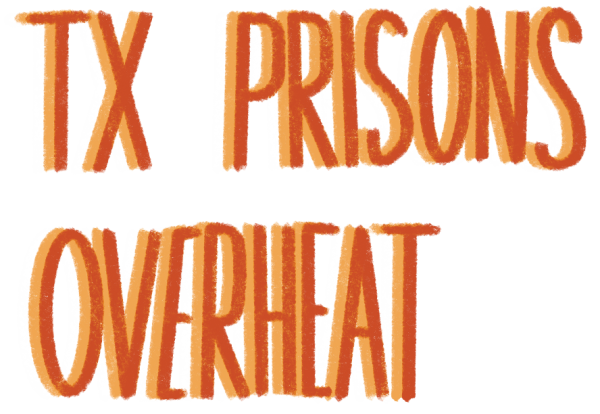The 2020 Battleground Worth Watching: The Rust Belt
January 9, 2020
There is a dangerous notion haunting the Democratic Party that voters can afford to settle and disagree with a presidential candidate as long as they stand the best chance at defeating President Trump. In essence, choosing the lesser evil. If we cannot understand that a legacy of political elitism, economically liberal policies and unsatisfied voters are what created Trump’s triumph in 2016, the country will never move forward.
Current President Donald Trump ran a populist campaign in 2016 that encouraged Americans to be hopeful for the chance to reduce the influence of the political elites who create policies that included a mostly forgotten but powerful voting bloc: white rural Americans. Trump’s message of recreating the American Dream that helped white working-class Americans achieve a form of economic security in the 1940s and 1950s contrasted starkly with that of Democratic nominee Hilary Clinton, who denounced Trump’s ideas as bigoted. She sought to preserve the status quo rather than actively fighting against it. While many pollsters and political pundits predicted that Clinton would defeat Trump, the 2016 Electoral College map revealed that rural Americans voted overwhelmingly in favor of Trump.
This shock has pushed the Democratic Party in two polar opposite directions: moderate and progressive. The moderate segment has decided that the increasing divide within the party that cost them the 2016 election will all but guarantee another win for Trump in 2020. However, the moderate camp fails to understand that rural Americans are not interested in seeing the status quo preserved. Rural Americans, more specifically industrial workers in the Rust Belt, a region in America that experienced industrial decline beginning in 1980, only voted for Trump because of his promise to return jobs that had been outsourced to foreign nations. This conclusion is supported clearly by the 2012 and 2016 Electoral College maps. In 2012, Democrats managed to secure Midwestern and Rustbelt states such as Iowa, Wisconsin, Ohio, Michigan and Philadelphia. Four years later in 2016, Democrats lost each of the aforementioned states which meant 70 electoral college votes for Trump. While these states may not appear similar upon first glance, their economies and voters share similar motivations.
Rural Americans have largely been pushed to the wayside. These voters feel as if American society has increasingly left them behind while citizens in cities get to experience what they perceive as urban economic prosperity. The Housing Assistance Council, a nonprofit focused on developing affordable housing in rural America, released a report which revealed that 78% of rural America is white. Additionally, the United States Department of Agriculture published data that more than one-third of rural Americans have a high school diploma as their highest level of education. Considering the extent to which Trump performs with non-college educated white Americans and his victory in 2016, these voters ought to be one of the most important demographics that Democrats should aim to win by selecting a candidate that appeals more to these voters.
Rural Americans make up a considerable portion of the Electoral College, and while a sizable portion may consistently vote Republican, the Democratic Party is poised to bring in a new major constituent base if they are able to reach out to these voters. Democrats lost 70 of these votes from the Rust Belt states mentioned above in 2016, but they held those same states in previous years. This suggests that with a proper strategy change and a wider appeal, Democrats can easily take these votes from Trump.
These states were ignored and pushed to the edges of the Democratic Party’s concern due to poor policy and planning. It was the Democratic Party’s failure to take into account the needs of rural Americans that pushed them to vote for Trump. Their vote is an act of defiance that demands that the Democratic Party listen to their needs and desires. These voters feel the direction of the country heading in a direction in which they are rendered voiceless. Combined with the fears of shrinking economic opportunity as more and more jobs are automated or moved to the cities, this shift has left rural Americans with virtually no other option but to support populist movements despite their flaws.
The Democratic Party is set to lose in 2020 if they fail to understand the motivations of rural Americans. Rural voters are capable of giving Democrats a 2020 victory if the Democratic National Committee manages to elect a nominee capable of appealing to and working in the best interests of disenfranchised rural America. Democrats must implement policies designed to tackle poverty in rural America. These policies need to be led by a progressive nominee who is capable of bringing aid to rural Americans, primarily by making higher education and healthcare more accessible to these communities.
Moderate Democrats have made no effort to help propel the party to acquire these voters. Moderates, such as Former Vice President and Democratic Candidate Joe Biden and Mayor and Democratic Candidate Pete Buttigieg, have made promises to help encourage mobility in these dying communities. Yet, if the 2016 Election reveals anything about what to expect in 2020, Democrats need to be careful in their nomination of candidates who can be connected to the legacy of elitism and poor economic policies that may push the Rust Belt back to Trump.
Rural America is being weakened by government officials who choose to work with industrial leaders instead of prioritizing the needs of workers. It is a failure of the Democratic Party to empower unions, cut corporate tax breaks and champion the expansion of welfare. If Democrats wish to take control of the country that is desperately in need of bold revolutionary politics, voters need to wake up. Democrats need to understand that they are the party of the working class. Democrats are not the pawns of corporations, unlike the GOP. Voters need to understand that Democrats must unite behind progressive candidates who seek to push the party and the country in a new direction to the left, in the hopes of a brighter future.







